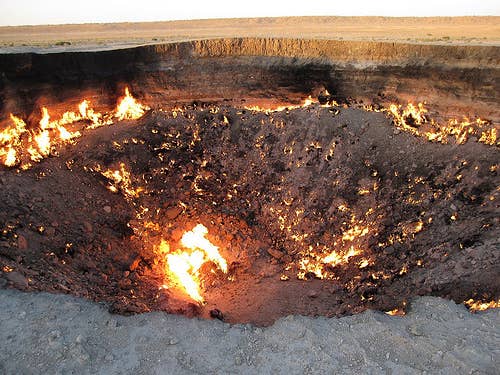
Some of the earth's most spectacular attractions draw visitors from miles around – think, the Grand Canyon or the La Brea Tar Pits. But the world is full of odd and awe-inspiring mysteries, whether natural or man made, that are less well known but equally intriguing!
Here we’ve compiled 5 of our favorite oddities that you truly have to see to believe!
Poland’s Crooked Forest
To this day no one knows how Poland’s Crooked Forest (or Krzywy Las) came to be. The grove of oddly shaped pine trees, located just outside the village of Nowe Czarnowo in western Poland, is said to have been planted around 1930, when the plot of land was still within the German province of Pomerania.
Generally, it’s believed that the strange shape of the approximately 400 pines is due to man’s intervention – by either tool or technique – but why the original farmers wanted a grove of trees with a 90 degree bend towards the north at the base remains a mystery!
Belize's Great Blue Hole
The Great Blue Hole (a UNESCO World Heritage Site), is a large submarine sinkhole that lies near the center of Lighthouse Reef off the coast of Belize. It is a circular hole that is over 300 meters across and 124 meters deep, which began formation approximately 153,000 years ago, and ranging to as recently as 15,000 years ago.
It is considered a form of Karst topography - a geologic formation shaped by the dissolution of a layer or layers of soluble bedrock, and is believed to have occurred above sea level (analysis of stalactites recovered from the site support this theory). As the ocean began to rise, the caves beneath were flooded.
Jacques-Yves Cousteau declared the site one of the top ten scuba diving sites in the world, after arriving on board his ship, the Calypso, to chart its depths.
The Yucatán Peninsula’s Underwater Caves
For decades divers have been fascinated by the complex network of caves that crisscross deep beneath the surface along the Caribbean coastline of Mexico.
Despite on-going efforts, to this day these caves of central Yucatán and the state Quintana Roo remain largely unexplored, due to the sheer number of cenotes (the Spanish form of the Maya word d’zonot, which roughly translates to any surface opening where groundwater can be reached) that can be found there.
Over the last few years a number of previously explored and mapped cave systems have been connected using advanced techniques that have allowed divers to pass through tight cave passages to create the largest connected underwater cave system on the planet, Sac Actun (meaning “White Cave System”), which, presently, has a length of about 215 km.
The Eye of the Sahara
Since astronauts were first launched into space, the world’s highest flying travelers have used “The Eye of Africa” has a landmark to help bring them home. The Richat Structure, also known as the Eye of the Sahara or Guelb er Richat, is a prominent circular feature of the Sahara desert of west central Mauritania in Africa.
Initially, because of the high degree of circularity, the strange formation was interpreted as an asteroid impact structure; however, there are distinct differences from known extraterrestrial impacts, and a lack of credible information to support the theory. Today the Richat Structure is argued be a highly symmetrical ancient geological artifact or volcanic dome, mostly like the product of erosion. Carbonite rock found within the structure has been dated as having cooled between 94 and 104 million years ago.
The “Door to Hell” in Turkmenistan
While Soviet geologists were drilling in the Derweze (which, in Turkmen language means “The Gate”) area of Turkmenistan in 1971, they tapped a cavern filled with natural gas. The ground beneath their drilling rig collapsed and they were faced with a sizeable hole, about 70 meters across in diameter.
Fearing the release of the gas may cause poisoning, the scientists decided to burn it off, hoping that the fire would consume the fuel within a matter of days. Their calculations were off, however, and the gas is still burning 40 years later. The 350 inhabitants of the tiny village have dubbed this fiery cavern, the “Door to Hell.”
Since Turkmenistan plans on increasing its natural gas deposits, in April 2010, the president ordered the hole be closed, or other measures be taken to limit its influence on the development of other natural gas fields in the area.
Photo credit: Stefan Krasowski

